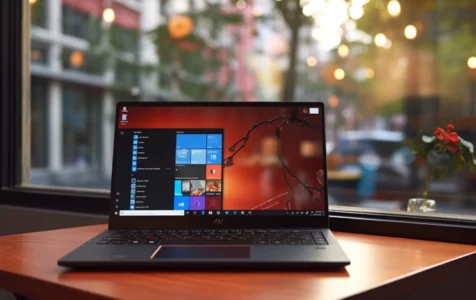Always ensure you have a backup of your data before proceeding with any cloning operations. Following the steps incorrectly or encountering unforeseen errors can lead to data loss.Caution
Computers play a vital role in modern life but can break down, risking data loss. To safeguard against this, it’s always a good idea to create backups to keep your data safe in case of a crash.
However, if you want to back up not just the data, but everything on the drive including the operating system, here’s how to clone Windows and everything else on your drive.
Hard drive cloning is a convenient solution for data migration and storage upgrades. This guide explains how to clone your hard drive on both Windows and Mac systems, facilitating data transfer and storage enhancement. Whether you’re moving Windows to a new drive or creating a secure backup, hard drive cloning is a smart option.
Expert Tip: For smoother PC performance, consider using a PC optimization tool. It handles junk files, incorrect settings, and harmful apps. Make sure it's right for your system, and always check the EULA and Privacy Policy.
Special offer. About Outbyte, uninstall instructions, EULA, Privacy Policy.
Choosing the Right Cloning Tools
While there are numerous backup services available, hard drive cloning offers a unique level of data protection and convenience. For specific cloning tasks, we’ll recommend free tools designed explicitly for drive cloning. Additionally, we’ll mention paid options with supplemental features for those who require more comprehensive backup solutions.
What You Need Before You Start Cloning
Before diving into the cloning process, it’s crucial to ensure that you have the following:
- Source Drive: This is the drive containing the data you want to clone.
- Destination Drive: The target drive where you intend to clone the data to.
For desktop users with both drives installed internally or those using a USB external drive for backup, you’re ready to proceed. However, if you’re working with a laptop equipped with only one drive bay, you’ll need an external SATA-to-USB adapter, dock, or enclosure to connect your bare drive to the computer.
Ensuring Your New Drive is Big Enough
In most cases, your destination drive should be equal to or larger than your source drive. If it isn’t, you’ll need to free up space on your source drive and shrink the primary partition to accommodate the destination drive’s size. This step is particularly important when migrating from a hard drive to a smaller SSD.
How to Clone on a Windows Computer
Windows users have access to various cloning tools, and one highly recommended option is Macrium Reflect Free. This software is known for its user-friendly interface and widespread popularity among users.
- Start by downloading the Home Use installer for Macrium Reflect and follow the installation instructions. Once installed, launch the program.
- In Macrium Reflect, you will see a list of connected disks. Select the source disk (ensure you check the leftmost box if it contains multiple partitions) and choose either “Clone This Disk” or “Image This Disk.”
- Select your destination disk, which will house the cloned data. Be cautious, as this action will erase all data on the destination disk. If needed, delete existing partitions on the destination drive to ensure it’s empty.
- If you’re cloning to a larger drive, use the “Cloned Partition Properties” option to extend your primary partition to fill the entire destination disk.
- You can opt to schedule this clone for regular imaging if you plan to use it for backup purposes. Otherwise, you can skip this step.
- Optionally, save the backup and its schedule as an XML file for safekeeping.
- Macrium Reflect will initiate the cloning process, which may take some time depending on the source drive’s size.
After the cloning process is complete, you should be able to boot from the cloned drive, making it a seamless transition.
How to Clone on a Mac Computer
For Mac users, SuperDuper is a highly recommended free software program for cloning tasks. It’s straightforward to use and has been a trusted tool for years.
- Download SuperDuper, open the DMG file, and double-click on the icon to install it.
- Open SuperDuper, and its intuitive interface will guide you through the process. Select the source disk you want to clone and the destination disk (be cautious, as the destination disk will be fully erased).
- Click “Copy Now” to begin the cloning process. It’s that simple.
After the cloning process is complete, you have two options. If you’re replacing your Mac’s internal drive with the new one, swap the drives and boot up as usual. If you want to boot from the cloned drive via USB, hold the Option key as your Mac starts up and select it from the boot list.
Conclusion
In summary, hard drive cloning is crucial for data protection and storage upgrades. Follow these instructions with the appropriate tools for your OS to clone your hard drive, ensuring your data’s security and accessibility. Whether you use Windows or Mac, the process is simplified here for your convenience.
